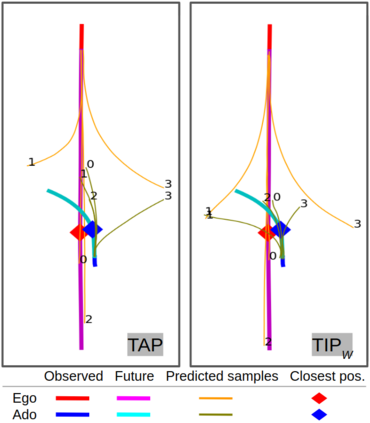When predicting trajectories of road agents, motion predictors usually approximate the future distribution by a limited number of samples. This constraint requires the predictors to generate samples that best support the task given task specifications. However, existing predictors are often optimized and evaluated via task-agnostic measures without accounting for the use of predictions in downstream tasks, and thus could result in sub-optimal task performance. In this paper, we propose a task-informed motion prediction model that better supports the tasks through its predictions, by jointly reasoning about prediction accuracy and the utility of the downstream tasks, which is commonly used to evaluate the task performance. The task utility function does not require the full task information, but rather a specification of the utility of the task, resulting in predictors that serve a wide range of downstream tasks. We demonstrate our approach on two use cases of common decision making tasks and their utility functions, in the context of autonomous driving and parallel autonomy. Experiment results show that our predictor produces accurate predictions that improve the task performance by a large margin in both tasks when compared to task-agnostic baselines on the Waymo Open Motion dataset.
翻译:在预测道路物剂的轨迹时,运动预测器通常会以数量有限的样本来估计未来分布。这一限制要求预测器生成样本,以最好地支持特定任务的具体要求。然而,现有预测器往往在不考虑在下游任务中使用预测值的情况下,通过任务不可知度措施加以优化和评价,从而可能导致亚于最佳任务性能。在本文件中,我们提出了一个任务知情的动态预测模型,通过预测准确性和下游任务(通常用于评估任务性能)的效用,更好地支持任务。任务效用功能并不需要全部任务信息,而是需要任务效用的具体说明,导致为广泛的下游任务服务的预测器。我们展示了我们在自主驾驶和平行自主情况下使用共同决策任务及其效用两种情况的做法。实验结果显示,我们的预测器通过联合推理,在与Waymo Open Motion 数据设置的任务确定基线相比较时,得出准确的预测结果,可以大大改善两个任务的任务性能。












